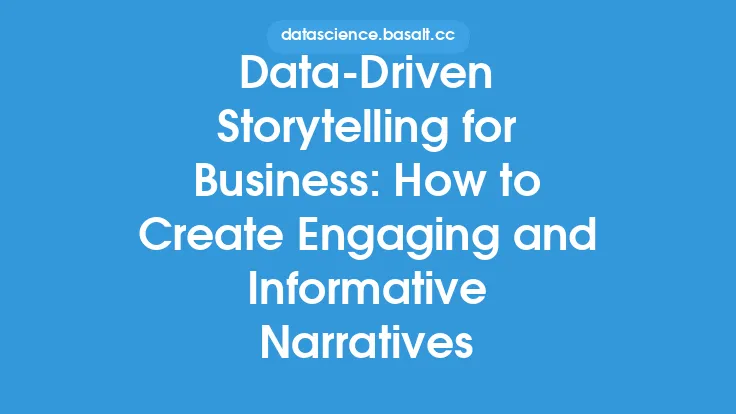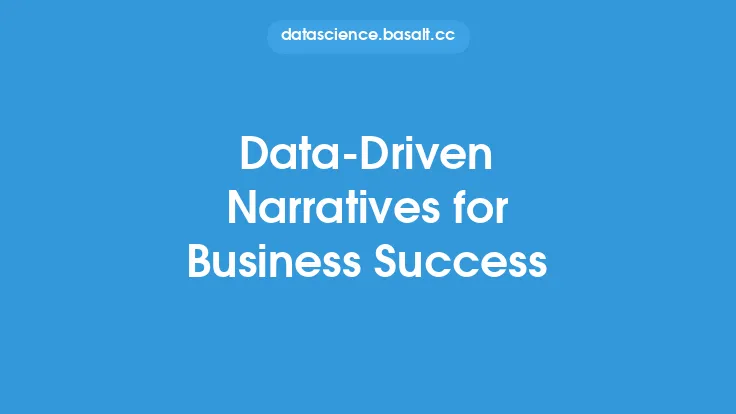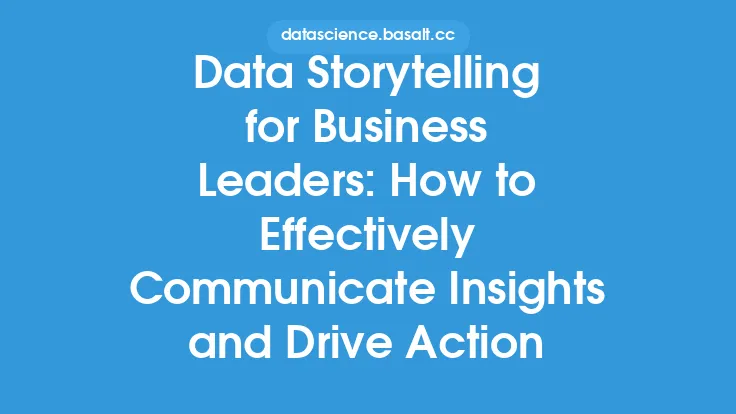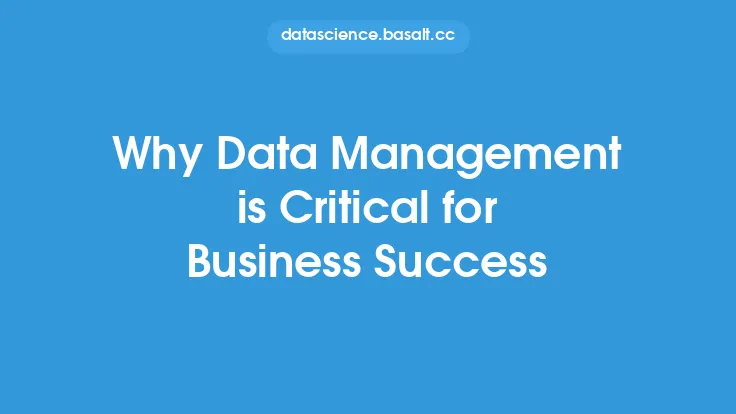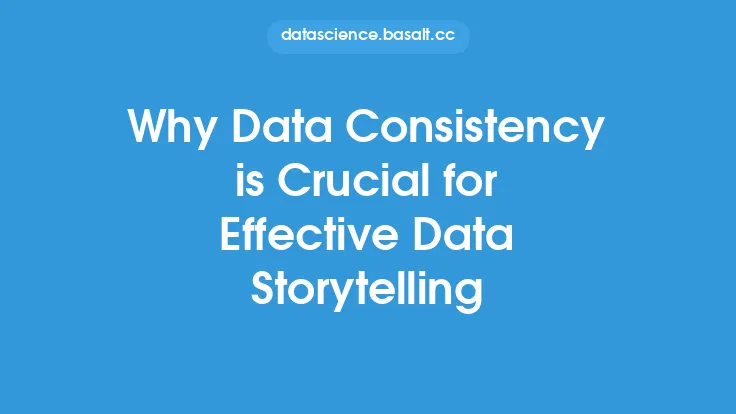In today's data-driven business landscape, organizations are constantly seeking ways to extract insights from their data and communicate them effectively to stakeholders. One approach that has gained significant attention in recent years is data storytelling. Data storytelling is the process of using narrative techniques to convey complex data insights in a clear and compelling manner. It involves transforming data into a story that can be easily understood by both technical and non-technical audiences, making it an essential skill for business success.
Introduction to Data Storytelling
Data storytelling is a multidisciplinary field that combines data analysis, visualization, and narrative techniques to communicate insights and trends in data. It requires a deep understanding of the data, as well as the ability to craft a compelling narrative that resonates with the audience. Effective data storytelling can help businesses to identify opportunities, optimize operations, and make informed decisions. It can also facilitate communication between different departments and stakeholders, ensuring that everyone is aligned and working towards the same goals.
The Benefits of Data Storytelling
The benefits of data storytelling are numerous. Firstly, it enables businesses to extract insights from their data and communicate them in a way that is easy to understand. This can lead to better decision-making, as stakeholders are able to grasp complex concepts and make informed choices. Secondly, data storytelling can help to identify trends and patterns in data, which can inform strategic decisions and drive business growth. Finally, data storytelling can facilitate collaboration and communication between different departments and stakeholders, ensuring that everyone is working towards the same goals.
The Key Elements of Data Storytelling
There are several key elements that are essential for effective data storytelling. Firstly, a clear and concise narrative is required, which sets the context and provides an overview of the insights and trends in the data. Secondly, visualizations such as charts, graphs, and maps are used to illustrate the insights and make them more engaging and accessible. Thirdly, the story must be relevant and meaningful to the audience, taking into account their interests, needs, and level of understanding. Finally, the story must be supported by credible and reliable data, which is accurately analyzed and interpreted.
The Data Storytelling Process
The data storytelling process typically involves several stages. Firstly, the data is collected and analyzed, using techniques such as data mining, statistical modeling, and machine learning. Secondly, the insights and trends in the data are identified, using visualization tools and techniques to illustrate the findings. Thirdly, a narrative is crafted, which sets the context and provides an overview of the insights and trends. Finally, the story is communicated to the audience, using a range of media and channels, such as reports, presentations, and dashboards.
Best Practices for Data Storytelling
There are several best practices that can help to ensure effective data storytelling. Firstly, it is essential to know the audience and tailor the story accordingly, taking into account their interests, needs, and level of understanding. Secondly, the story must be simple and concise, avoiding technical jargon and complex concepts. Thirdly, visualizations must be used to illustrate the insights and make them more engaging and accessible. Finally, the story must be supported by credible and reliable data, which is accurately analyzed and interpreted.
Common Data Storytelling Mistakes
There are several common mistakes that can undermine effective data storytelling. Firstly, using too much technical jargon and complex concepts can confuse and alienate the audience. Secondly, failing to provide context and set the scene can make the story difficult to follow and understand. Thirdly, using poor quality or inaccurate data can undermine the credibility of the story and lead to incorrect conclusions. Finally, failing to engage the audience and make the story relevant and meaningful can result in a lack of interest and participation.
The Role of Technology in Data Storytelling
Technology plays a critical role in data storytelling, providing a range of tools and techniques for collecting, analyzing, and visualizing data. Data visualization tools such as Tableau, Power BI, and D3.js enable users to create interactive and dynamic visualizations, which can be used to illustrate insights and trends in the data. Additionally, machine learning and artificial intelligence algorithms can be used to identify patterns and trends in the data, and to make predictions and recommendations. Finally, cloud-based platforms and collaboration tools enable users to share and communicate their stories with others, facilitating collaboration and communication between different departments and stakeholders.
The Future of Data Storytelling
The future of data storytelling is exciting and rapidly evolving. As data becomes increasingly ubiquitous and accessible, the demand for effective data storytelling is likely to grow. Additionally, advances in technology, such as machine learning and artificial intelligence, are likely to provide new and innovative ways to collect, analyze, and visualize data. Finally, the increasing use of cloud-based platforms and collaboration tools is likely to facilitate greater collaboration and communication between different departments and stakeholders, enabling businesses to extract insights from their data and communicate them effectively to drive business success.
Conclusion
In conclusion, data storytelling is a powerful approach to communicating complex data insights in a clear and compelling manner. By combining data analysis, visualization, and narrative techniques, businesses can extract insights from their data and communicate them effectively to stakeholders. The benefits of data storytelling are numerous, including better decision-making, identification of trends and patterns, and facilitated collaboration and communication. By following best practices, avoiding common mistakes, and leveraging technology, businesses can create effective data stories that drive business success. As the field of data storytelling continues to evolve, it is likely to play an increasingly important role in driving business success and informing strategic decisions.

